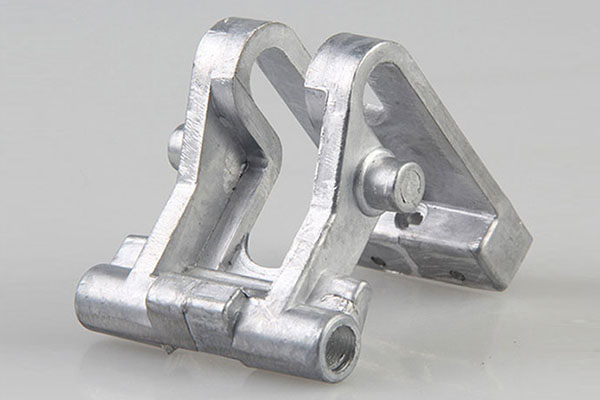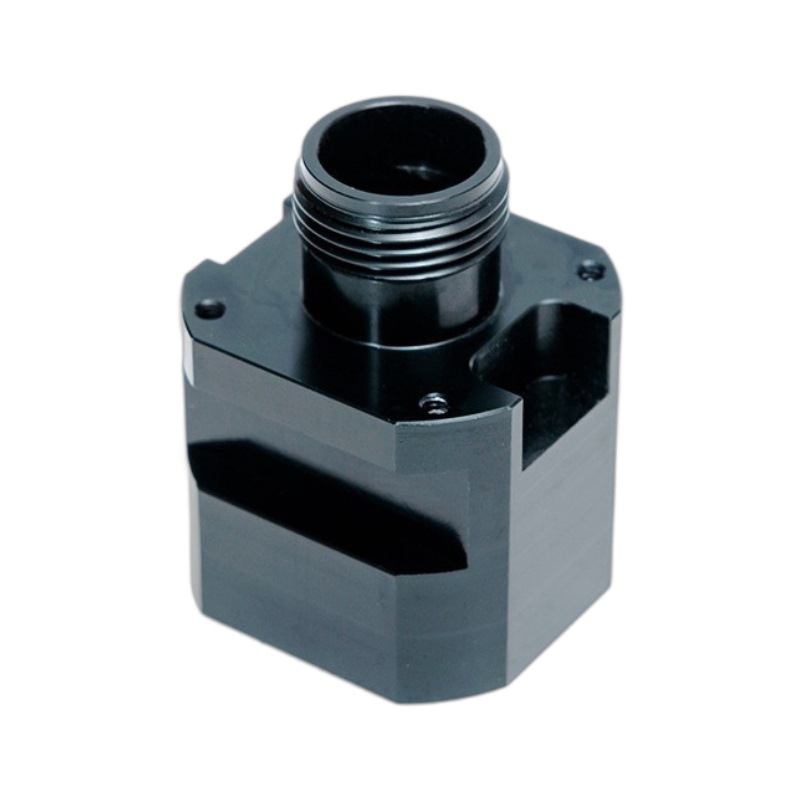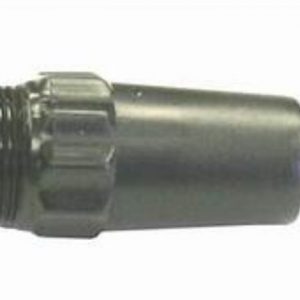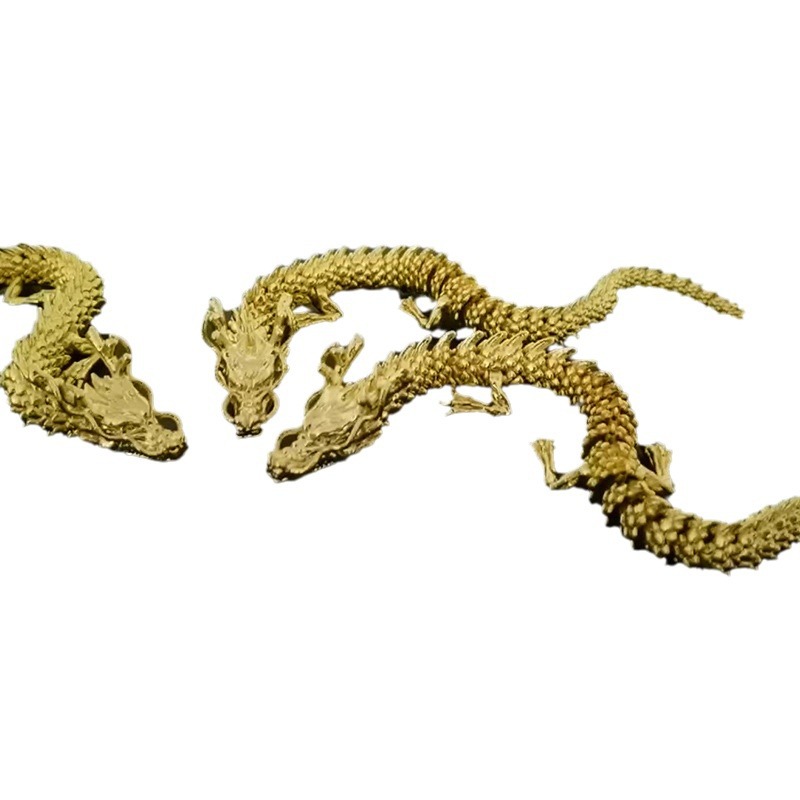1. What is machining surface finish? Why is it important?
In mechanical manufacturing, the surface finish is essentially the degree of microscopic unevenness of the surface after processing, and the core evaluation indicators include surface roughness (microscopic peak-to-valley height difference) and surface texture uniformity. Many people confuse "surface finish" with "surface roughness", in fact, the former is a common name in the industry, and the latter is an internationally accepted quantitative indicator, which together constitute the core evaluation dimension of processing quality.
The importance of surface finish is reflected in three key dimensions: first, product performance, for example, the low roughness surface of the engine block reduces friction losses and extends service life by more than 30%; The second is the appearance requirements, the aluminum alloy shell of consumer electronics needs to achieve a mirror effect through precision polishing to meet the aesthetic needs of the market; Finally, there is compliance with machining standards, where most industries have mandatory requirements for surface parameters for critical components, such as the sandblasting cleanliness standard specified by ISO 8503.
To give a practical example, an auto parts factory once caused a 40% increase in gear noise complaints due to excessive gear surface roughness (Ra value of 3.2μm, exceeding the standard value by 1.6μm), and subsequently controlled the Ra value below 0.8μm by optimizing the processing process, and the problem was completely solved. This shows that surface finish directly determines product reliability.
2. How to measure and evaluate surface finish? Core metrics and tools
Surface roughness measurement is a key link to ensure processing quality, and common indicators and tools need to be accurately selected according to the scene.
1. Core evaluation indicators
- Ra value (arithmetic mean deviation): The most commonly used indicator, representing the arithmetic mean of the peak-to-valley heights within the sampling length, suitable for most mechanical parts, such as shafts, gears, etc.
- Rz value (maximum peak-to-valley height): The vertical distance from the highest peak to the lowest trough within the sampling length, commonly used for components subjected to shock loads, such as automotive piston rings.
- Other indicators: Rq (root mean square deviation), Rmr (material ratio), etc., which are supplemented in precision manufacturing.
2. Adapt to mainstream measurement tools and scenarios
| Application scenarios | Adaptable to measuring tools | Accuracy requirements | Core strengths |
| General machining | Portable contact roughness meter (e.g., Eurospectra OU1100) | Value Error≤±10% | It is convenient to operate and is suitable for quick inspection on the shop floor |
| Aerospace components | Laser Profiler (as in the CLC SJ5800) | Error ≤± 2% Ra | Non-contact measurement to avoid damage to delicate surfaces |
| Medical devices | Atomic force microscopy | Accuracy≥ 0.003nm | Nanoscale measurements to meet biocompatibility requirements |
| Mold manufacturing | Contact high-precision all-in-one machines (e.g. MarSurf M300) | Z-axis resolution ≥ 0.0001 μm | Balance precision and efficiency to adapt to complex surfaces |
3. Measurement standards and processes
International common measurement standards include ISO 4287 (Surface Roughness Terms and Definitions), GB/T 1031 (Chinese National Standard). When actually measuring, it should be noted that the sampling length should be selected according to the size of the part (usually 0.8-8mm), the measurement direction should be parallel to the machining texture, and the same part should be measured at least 3 points to take the average value to avoid data deviation.
3. Comparison of key processing technologies and surface treatment methods
The impact of different finishing processes on surface finish varies significantly, and the appropriate scheme needs to be selected according to the material characteristics and precision requirements:
1. Analysis of core processing processes
- Grinding: Achieve surface accuracy of Ra 0.4-1.6μm through grinding wheel cutting, suitable for batch processing of steel materials, such as machine tool spindle grinding.
- Polishing: Divided into mechanical polishing (Ra 0.02-0.1μm) and chemical polishing, the former is cut by tools such as wool wheels, and the latter uses chemical solutions to dissolve bumps, suitable for optical component processing.
- Electrochemical polishing: Using the workpiece as the anode, selectively dissolving through direct current, it can achieve a mirror effect of Ra<0.1μm, which is widely used in surgical instruments of medical devices.
- Shot peening: Using high-speed projectiles to hit the surface, it can not only control the roughness of Ra 1.6-3.2μm, but also increase the surface fatigue strength by 20%-40%, such as aero engine blade strengthening treatment.
2. Process selection decision table
| Surface accuracy requirements | Recommended process | Applicable materials: | Cost reference |
| Ra<0.1μm | Electrochemical polishing / ultra-fine polishing | stainless steel, aluminum alloy | 3-5 times more than normal polishing |
| Ra 0.1-0.4μm | Precision grinding + mechanical polishing | Mold steel, titanium alloy | Medium cost |
| Ra 1.6-3.2μm | Shot peening/blasting | Carbon steel, cast iron | 1/3 of normal polished |
Case: A wind turbine tower manufacturer uses a combined process of "shot blasting + plastic spraying", which not only achieves surface roughness of Ra 2.0μm (to ensure coating adhesion), but also achieves a 1000-hour salt spray test standard through plastic spraying, reducing the comprehensive cost by 40% compared to pure polishing.
4. How do material properties affect surface finish?
The hardness, chemical composition and other characteristics of the material directly determine the processing difficulty and final surface quality, and the processing points of different materials are as follows:
1. Common material processing rules
- Metal processing: The harder the material, the more difficult it is to obtain low roughness, such as hardened steel (HRC 55 or above) needs to be ground with a diamond grinding wheel to achieve Ra below 0.8μm; Soft materials such as aluminum alloys are prone to accumulated edges, and the cutting speed needs to be controlled to avoid surface defects.
- Stainless steel surface treatment: Stainless steel has strong toughness and is prone to burrs during grinding, so it is recommended to use wet grinding (filled with coolant) and paired with cubic boron nitride (CBN) tools to effectively reduce the Ra value.
- Composite materials: such as carbon fiber reinforced plastics (CFRP), which are prone to fiber stripping during processing, require low-speed cutting with diamond tools to ensure a surface accuracy of Ra 1.6μm.
2. The relationship between material hardness and surface roughness
Experimental data show that when the hardness of the material is increased from HRC 30 to HRC 60, the surface roughness under the same cutting parameters increases by 30%-50%. Therefore, high-hardness materials need to be compensated by optimizing cutting parameters (e.g. reducing feed rates) or by using more refined machining processes.
5. Key factors affecting surface finish and optimization strategies
1. Analysis of core influencing factors
- Cutting parameters: The feed rate has the greatest impact on roughness, such as beryllium cutting experiments, when the feed rate rises from 0.03mm/r to 0.18mm/r, the roughness soars from 200nm to 1650nm; The cutting speed needs to match the material characteristics, too high is easy to produce edges, and too low is inefficient.
- Tool selection: The smaller the blunt radius of the cutting edge, the higher the surface accuracy (e.g., the edge radius of a single crystal diamond turning tool is 0.04μm, suitable for precision machining); The tool material needs to match the workpiece, such as carbide tools should be selected for processing stainless steel to avoid rapid wear of high-speed steel tools.
- Coolant use: suitable coolant can reduce cutting temperature and reduce friction, such as emulsion is suitable for ordinary steel processing, and cutting oil is more suitable for superalloy processing, which can reduce roughness by 15%-20%.
- Machining vibration control: Machine tool spindle vibration and unstable workpiece clamping will lead to surface ripple defects, which need to be solved by optimizing the fixture design (such as using hydraulic fixtures) and adjusting the spindle speed (avoiding resonance frequency).
2. Practical optimization steps
- Pretreatment: adjust the tool angle according to the hardness of the material (negative rake angle is used for hard materials);
- Parameter debugging: first reduce the feed rate (recommended ≤0.05mm/r for fine cars), and then optimize the cutting speed;
- Process monitoring: use portable roughness meter for real-time detection and timely adjustment of the process;
- Post-processing: For parts with high requirements, add polishing or electrochemical treatment processes.
Case: When processing beryllium (brittle material) in a precision machinery factory, microcracks appeared on the surface due to improper cutting parameters in the early stage, and by reducing the feed rate to 0.03mm/r, controlling the cutting speed at 40m/s, and using a single crystal diamond tool, the surface roughness finally reached Ra 0.2μm, which met aerospace standards.
6. Detailed explanation of industry applications and standards and specifications
The requirements for surface finish vary significantly across industries, requiring strict adherence to industry-specific needs and international standards:
1. Key industry standards and requirements
- Aerospace standard: The turbine blade needs to have a Ra<0.8μm, and the surface residual compressive stress after shot peening is up to -800MPa, and the crack propagation resistance is increased by 50%;
- Automotive Industry Requirements: Engine Block Ra 0.8-1.6μm, Piston Ring Rz 5-20μm to ensure sealing performance and wear resistance;
- Medical device surface: Orthopedic implants require Ra<0.1μm to reduce bacterial attachment and human tissue irritation, and comply with ISO 10993 biocompatibility standards;
- Mold manufacturing: The surface of the injection mold is Ra 0.1-0.4μm to ensure the product release effect and surface reproduction accuracy.
2. Core international standards
- ISO 8503: Standard for the correspondence between surface cleanliness and roughness;
- ISO 4287: Definition of surface roughness parameters and measurement methods;
- ASTM B464: Standard for Surface Quality of Metallic Materials After Electrochemical Polishing.
7. Yigu Technology's view
The control of the surface finish of the machining machine is the result of the synergy of "materials, processes, and equipment". Enterprises should not blindly pursue the ultimate precision, but should choose the most cost-effective solution according to industry standards and product function requirements. It is recommended to give priority to improving surface quality by optimizing cutting parameters, tool selection and other low-cost methods, and then adopt composite machining technology for high-demand scenarios. At the same time, real-time measurement and data traceability are the key to ensuring consistency, and intelligent measurement equipment (such as online profilers) will become an industry trend in the future, helping enterprises achieve efficient and accurate quality control.
8. FAQ FAQs
- Q: How should I choose to use Ra and Rz values?
A: The Ra value is suitable for most general purpose parts (like shafts, gears), reflecting the overall roughness level; Rz values are more suitable for parts that are subjected to shock or require high sealing requirements (e.g., piston rings, sealing ring contact surfaces), focusing on the maximum peak-to-valley difference.
- Q: How can stainless steel machining avoid exceeding surface roughness?
A: Use carbide or diamond tools, use wet cutting (fill with special stainless steel coolant), control the cutting speed at 80-120m/min, feed ≤ 0.1mm/r, and can be further optimized by electrochemical polishing after processing.
- Q: What is the core difference between shot peening and polishing?
Answer: Shot peening is mainly for surface strengthening, while controlling medium roughness (Ra 1.6-3.2μm); Polishing focuses on reducing roughness, achieving a mirror effect (Ra<0.1μm), but with limited improvement in surface strength.
- Q: What is the most critical factor affecting surface finish?
Answer: Feed volume is the most important factor (especially in turning and milling operations), followed by tool edge quality and machining vibration control, which together account for more than 70%.








